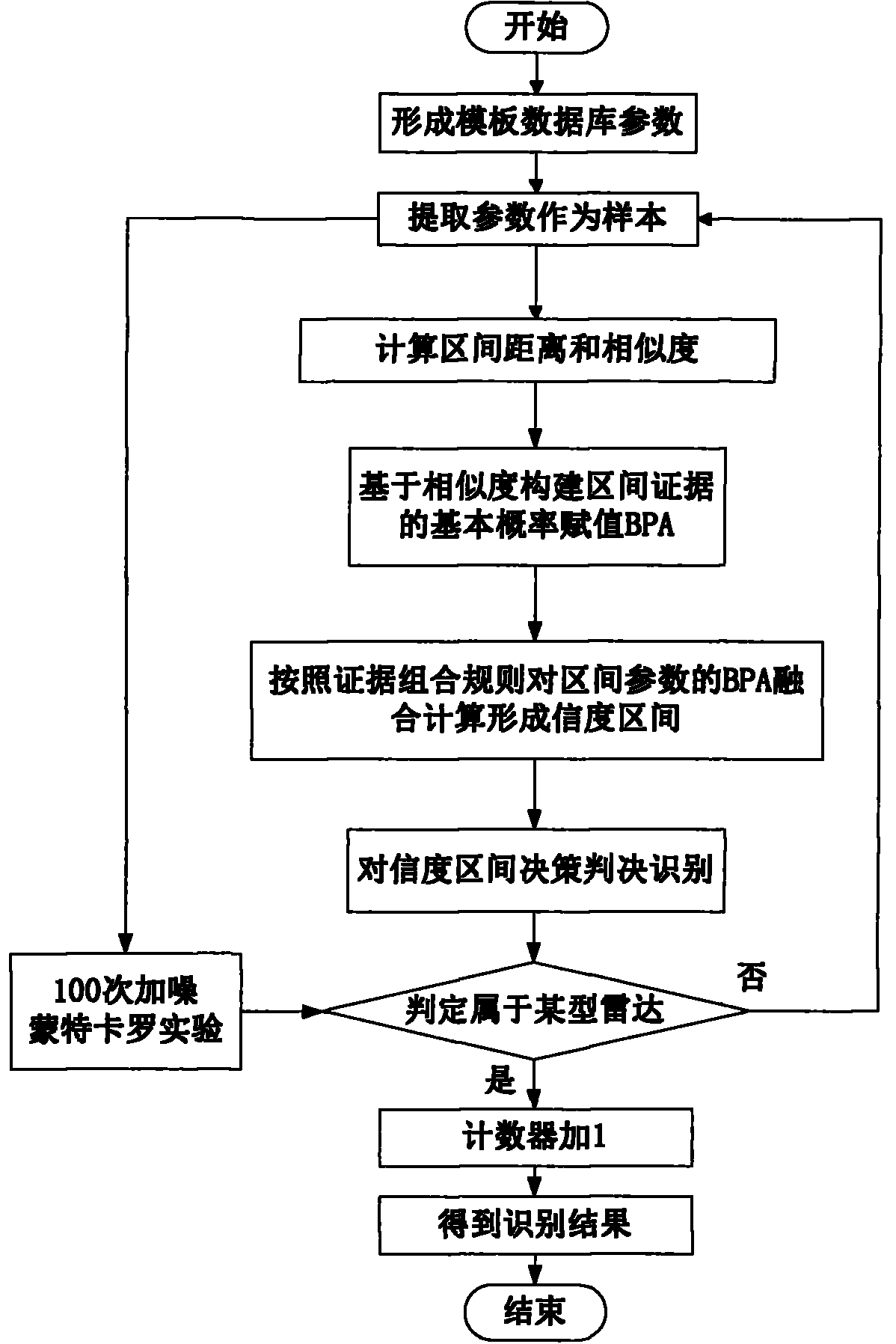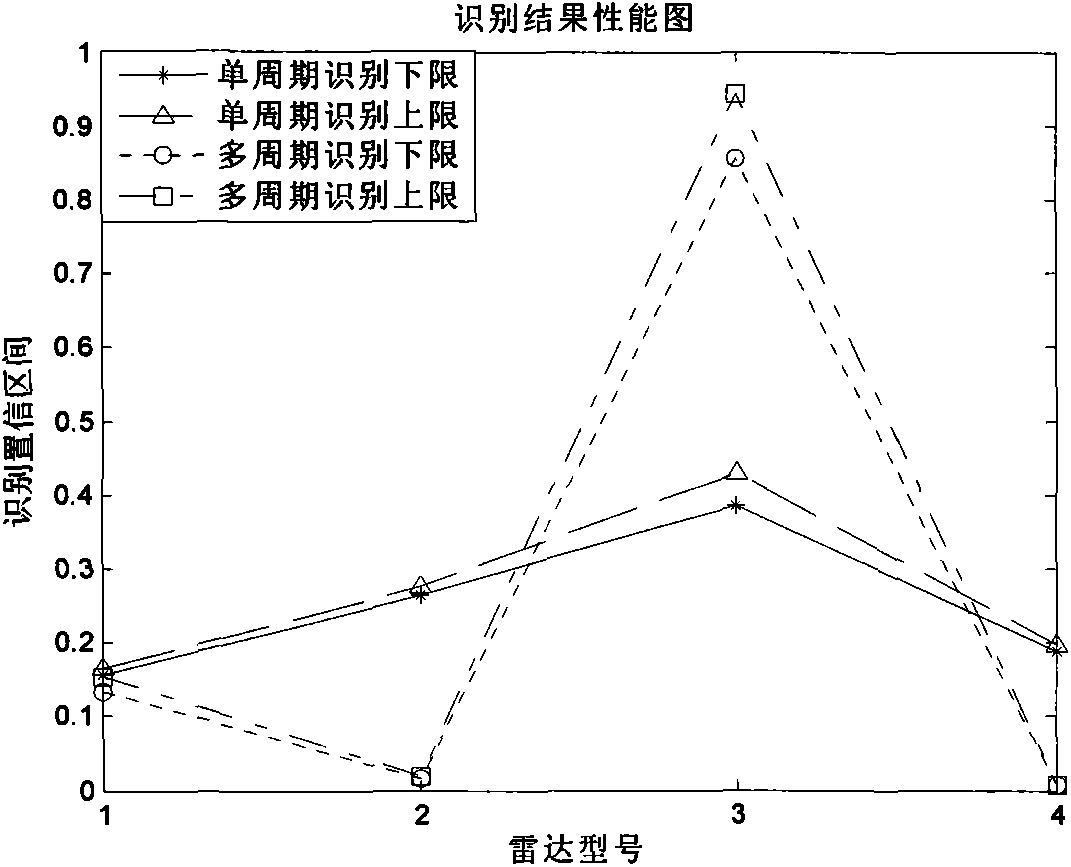Emitter recognition algorithm based on interval number and evidence theory
A technology of evidence theory and recognition algorithm, applied in the field of multi-sensor target recognition algorithm, which can solve problems such as difficulty in subjective assignment
- Summary
- Abstract
- Description
- Claims
- Application Information
AI Technical Summary
Problems solved by technology
Method used
Image
Examples
Embodiment
[0103] Suppose two sensors S 1 , S 2 Set to ESM and ELINT, measure the radar radiation source, and get 4 possible radar models R j (j=1,2,3,4). The radar radiation source parameters observed by each sensor are pulse repetition frequency PRF, pulse width PW and radar operating frequency RF, which are recorded as PR, PW, and PF. To build sensor S 1 , S 2 Detected PRF, PW and RF three-type interval parameters and 4 radar models in the database R j (j=1,2,3,4) The similarity between interval parameters, using the similarity as the BPA of the evidence theory, the three parameters are first fused to obtain the BPA of each sensor for the four radar models, and then the two The combination and fusion of the two sensors obtains the total BPA of the four radar models, and finally determines the classification of the target according to the identification criteria. Using the interval parameter sensor recognition algorithm proposed by the present invention, the above design requirements ca...
PUM
 Login to View More
Login to View More Abstract
Description
Claims
Application Information
 Login to View More
Login to View More - R&D
- Intellectual Property
- Life Sciences
- Materials
- Tech Scout
- Unparalleled Data Quality
- Higher Quality Content
- 60% Fewer Hallucinations
Browse by: Latest US Patents, China's latest patents, Technical Efficacy Thesaurus, Application Domain, Technology Topic, Popular Technical Reports.
© 2025 PatSnap. All rights reserved.Legal|Privacy policy|Modern Slavery Act Transparency Statement|Sitemap|About US| Contact US: help@patsnap.com



